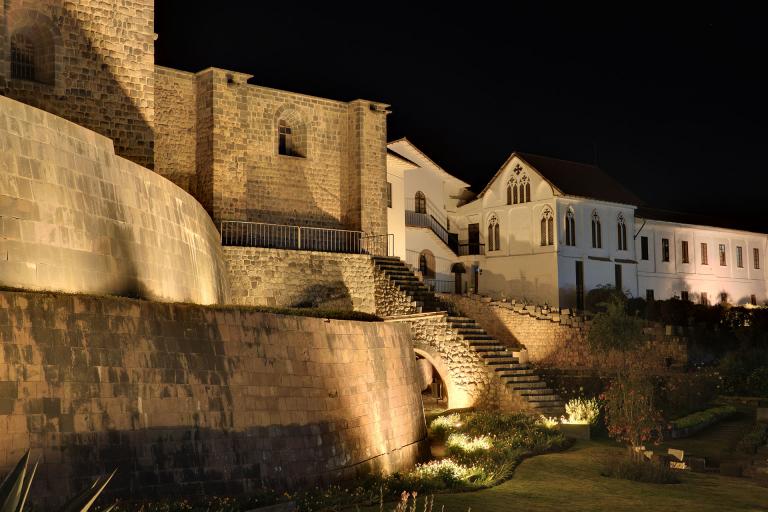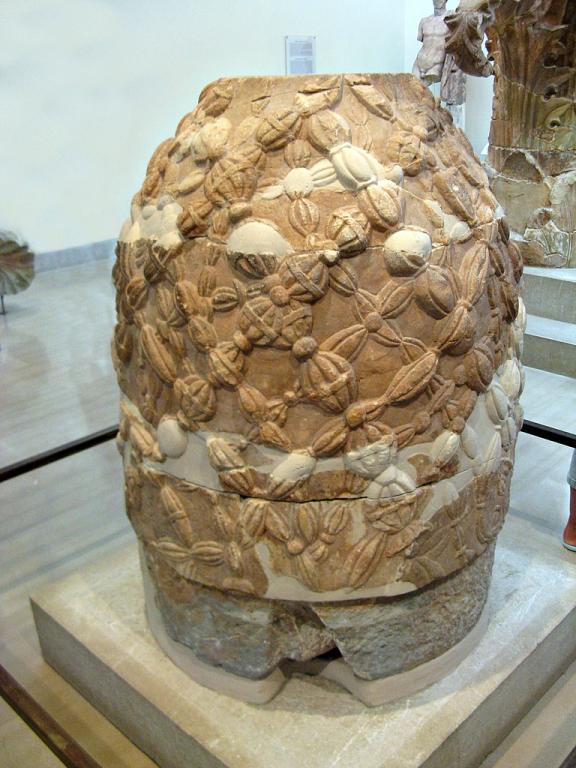
The relevant Wikipedia article says that the indigenous name of Cusco is Qusqu and says that, although the name was used in the imperial Inca language, Quechua, it actually originated in the Aymara language, which may or may not be related to Quechua but which remains today as one of the official languages of Bolivia. According to this account, Cusco is derived from the phrase qusqu wanka (‘Rock of the owl’), which in turn comes from an Aymara foundation myth for the city.
Our local guide, however, says that the name Cusco derives from a Quechua word meaning “navel,” and I’ve found a number of allusions to this proposed etymology online. I don’t know whether it’s true or not — for what it’s worth, our guide is a native Cusqueña and, she says, a descendent of the Inca royal family, which is far from incredible — but I’m going to go for a moment with the notion that Cusco means “navel.”
It wouldn’t surprise me at all if it were true. After all, in their native Quechua language the Inca called their empire Tawantinsuyu or “The Four Regions,” and Cusco was the center of those four regions. But it might well be very interesting for another reason. Please permit some slightly informed speculation:
The Jerusalem Temple gave its name, by extension, to the entire city of Jerusalem. In rabbinic literature, the Temple was known as the Bēt HaMīqdaš (בֵּית־הַמִּקְדָּשׁ), or “House of Holiness.” The precise Arabic equivalent is بيت المقدس (Bayt al-Maqdis or, sometimes, Bayt al-Muqqadas) — a phrase that came to be applied not merely to the Temple but to the city of Jerusalem as a whole, because the Temple had stood there. (Even more commonly, among Arabic speakers, Jerusalem is called اَلْـقُـدْس [al-Quds, or “the Holy”], for the same reason. Arabs rarely call the city Jerusalem. Almost never.)
Anyway, I’m going to suggest that Cusco might have been called “Navel” by a similar process of extension because of the presence in it of the very greatest of all Inca temples, the Coricancha.
But you may still not see how that would explain the idea of a navel.
I’ll try to explain.
In widely attested and widely diffused ancient conceptions of “the temple,” temples were thought to be the center of everything on earth — think of Salt Lake City, with all of its streets numbered from Temple Square — and the connecting point between our world, the world above, and the world below.

(Wikimedia Commons public domain photograph)
The temple of Apollo at Delphi was known as the ὀμφᾰλός (omphalos) or “navel” of the earth. The Mahabodhi Temple in India is the navel of the earth. And many other examples could be given. Here’s one:
The Midrash Tanhuma, a Roman-era Jewish text describing the huge stone that sits today under the seventh-century AD Dome of the Rock on Jerusalem’s Temple Mount, reads as follows:
As the navel is set in the centre of the human body, so is the land of Israel the navel of the world . . . situated in the centre of the world, and Jerusalem in the centre of the land of Israel, and the sanctuary in the centre of Jerusalem, and the holy place in the centre of the sanctuary, and the ark in the centre of the holy place, and the Foundation Stone before the holy place, because from it the world was founded.
The fact that this temple-related concept of “the navel of the earth” exists in such widely disparate places and cultures as Greece, Israel, and India is remarkable. To find it in far-off and apparently quite unrelated Peru would be even more remarkable — but not, in a sense, really surprising.
Posted from Cusco, Peru












